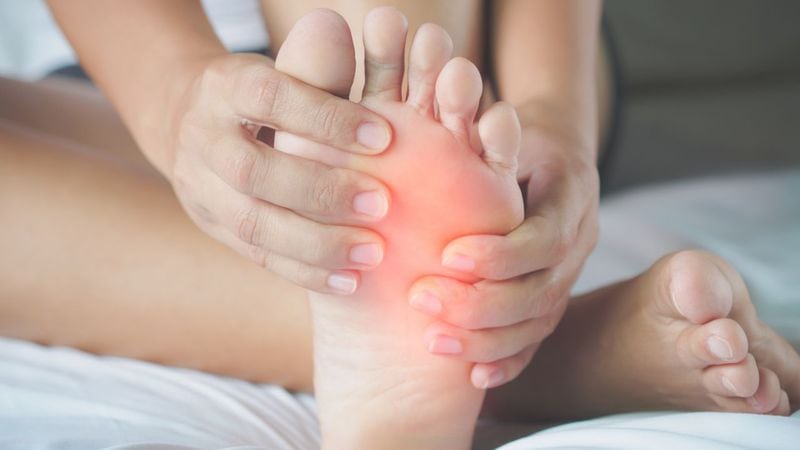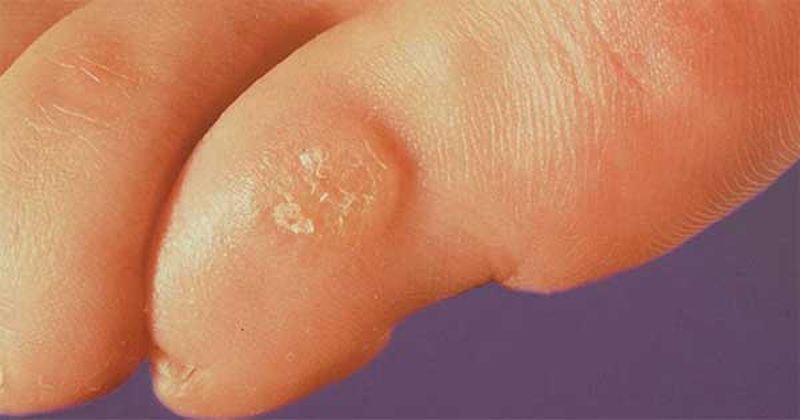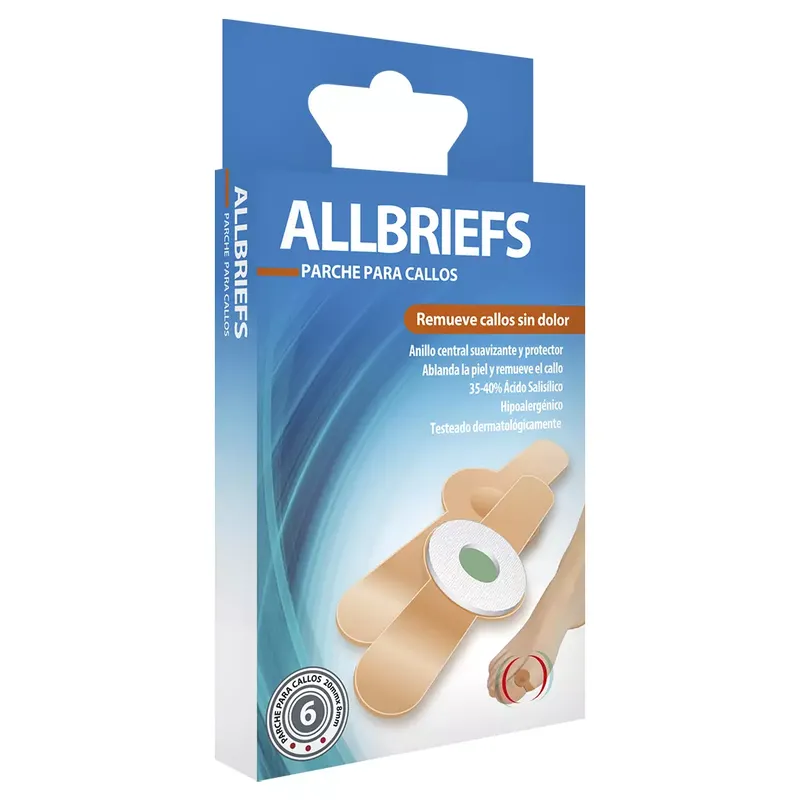They are ugly, hard, rough and injured: these expressions of the skin, which have a lot of bad reputation, are seen and manifested more during the summer, when walking barefoot or with sandals. Three specialists tell the reasons for their presence and how to avoid them.
The first memory I have of seeing a callus was on an aunt’s feet. I didn’t understand why her fingers, very brown from too much monoi oil and coconut oil, had these little dark circles. I then thought they were “pregnant” because they had developed some kind of belly, but it was just summer calluses.
She was a fan of platform sandals, which I assume weren’t leather, so they probably caused constant rubbing or pressure on her feet.
“Calluses or calluses is the colloquial name for helomes,” says Lorna Velásquez, dermatoesthetic doctor at Clínica Alemana. “These appear due to an increase in the number of cells in the surface layer of the skin – a phenomenon called hyperkeratosis – which causes keratin to build up in the stratum corneum, causing the skin to thicken.”
How do you know if it’s a callus?
Not all hard skin is callus. In fact, the thickest, roughest layer that typically forms on the heels, elbows, knees, and even hands is called a callus, and it’s the skin’s way of protecting itself against chafing. .
A callus, on the other hand, is smaller and deeper, with a hard center surrounded by inflamed skin. These are the ones that usually appear on the toes, especially on the outside of the little finger, and you know they’re there by the way they hurt when you press on them.
As indicated on the website of the mayo clinic The most common symptoms of corns and calluses are:
- An area of hard, thick skin
- A raised and also stiff bump of skin
- Tenderness or pain underneath when pressed
- Dry, scaly, or waxy skin
Why do calluses appear?
“They are caused by abnormal pressure or friction on the skin,” adds Juan Arturo Sandoval Quijada, Vidaintegra dermatologist. Although they can also appear on the hands, especially those of those who work with them in manual labor, they are much more common on the feet, which receive more pressure and friction through shoes. .
“We see them a lot in patients who have certain foot deformities,” says Irene Araya, dermatologist at Clínica Santa María. For example, people with flat feet, flat forefeet, or older people with drooping arches. “Any alteration to the impression can cause a callus, especially where it rubs against the shoe or shoes,” he says.

This is confirmed by Sandoval: “Most of the time, calluses are caused by ill-fitting shoes, but also by problems of congenital or traumatic alteration of the bone structure.”
According to him, the most common—and also preventable—causes of the appearance of calluses are:
- Wearing ill-fitting shoes or socks : if it is tight, it will generate a lot of pressure; if it is too loose, the movement will cause friction. In both cases, a callus may appear.
- Wear shoes made of very hard material : the lack of flexibility of a shoe or a sandal can cause excessive pressure on the foot.
- Wear high heel shoes : the unnatural position in which the foot is left is the perfect habitat for calluses.
- Do not wear socks: the direct friction of the foot with the shoe generates friction which is also the cause of calluses.
- Do not perform orthopedic treatment (if necessary): Those with special foot conditions should use tools or apply products to avoid these problems.
- Not protecting the skin at work or during risky activities : Certain types of occupations or sports generate intense friction or pressure on the hands and feet. In such cases, appropriate precautions should be taken.
Calluses can appear in different places on the foot, and in each area they have a different name. “They are calluses if they are on the sole; they are dorsal if they are above the toes or on the sides of the foot; or they are interdigital if they are between the fingers,” says Velásquez.
When one of these annoying bumps appears, “it is important to look at what caused or is causing this increase in pressure”, analyzes the specialist from Clínica Alemana. “It could be due to a very tight shoe or an altered footprint; whatever the reason, it is very important to study it.
There is no need to ignore or simply suffer the growth of a callus, because if the discomfort is great, it will change the way we support the foot and, possibly, it could “alter the movement of other joints, from the hip to the spine. That’s why it’s important to have the right professional support.
Which people or patients are more likely to generate calluses?
It is common for certain diseases to be confused with corns, explains Irene Araya. One of them is the plantar wart, which appears on the sole of the foot, a case where “there is an infection, a viral process where a callus forms, but which is the product of the wart itself, no pressure or rubbing. But it can be confusing,” he explains.
Plantar warts are caused by a certain type of human papillomavirus (HPV), and since it’s contagious, “they should be treated differently from a corn,” Velázquez points out.
Another case that can be confusing is when there is palmoplantar psoriasis or some plantar keratoderma. “People also confuse them with calluses, but these are inflammatory skin conditions that generate a scab or callus as a result of the same inflammatory process,” says Araya.
Athletes are another group that is not spared from calluses, especially distance runners, who are subjected to a lot of pressure, rubbing and friction. The same goes for those who play tennis, as they are constantly accelerating and braking, with lots of lateral movement. For tennis players, if they do not protect the racket handle well, calluses may also appear on their hands.

When it comes to work, those who tend to have problems with calluses are those who have to wear heavy and rigid safety shoes. One way to avoid them in this case is “to use appropriate insoles for each type of shoe”, suggests the dermatologist from Clínica Santa María.
point , a magazine specializing in classical ballet, has an interesting point to consider. “Calluses are like custom armor,” they say in an article on the subject, “one you developed when you started working on the soles of your feet.” This is why he calls on the dancers, who constantly suffer from it, to look at them with a different eye. “Hard layers of keratin can be unsightly, but they protect your feet much better than smooth, more blister-prone skin. If your calluses aren’t hurting you, leave them alone. They probably prevent further pain.”
How NOT to treat a callus?
Calluses hurt. And if they don’t hurt, they look ugly. This is why most, once they appear, try to eliminate them as they can. An old tradition consists in filing or scraping them: by reducing them to dust, it is believed that they will disappear.
But it’s not like that. “The worst thing a patient with calluses can do is start scratching them on their own,” Araya warns. “Of course, they are painful, especially those on the points of support; but it was formed for a reason”, he analyzes. Therefore, the first thing to understand is that if this callus came out, it is because the foot needed some protection.
“The skin tries to combine the thing, because otherwise a hole would remain and an ulcer would form there,” he adds. “You have to be careful not to start scratching stupidly, because infection can occur if you do it badly,” he says.
How should you treat them?
In most cases, according to the Clínica Alemana specialist, calluses must be treated with a procedure called delamination. “This means that a few fine clumps of hyperkeratosis are starting to come off, leaving the skin looking thinner,” he explains. “But it’s not going to cure or remedy the problem if the cause of the callus persists: whether it’s bone alterations, improper footwear or a problematic step,” he says.
It is very important to act in this regard. If it’s the shoe, you just have to change it or stop using it, but if it’s a change of foot, “you have to make an appointment with a foot traumatologist, for example, so that he can see how the patient walks and what specific insole he needs,” Araya continues.
If it is already a skin problem, the cause of which is not so clear, it will be a specialist in dermatology who will give the appropriate treatment.
When can a podiatrist intervene? As long as there is permission from the attending physician, whether traumatologist or dermatologist, “to gradually eliminate the area that has already formed”. Of course, this visit is only recommended when measures are taken to prevent its appearance, such as the use of insoles, creams or specific treatments.
As small gestures that can be done at home, Sandoval mentions good foot grooming, adequate hydration of the skin and, above all, wearing comfortable shoes and socks.
latest tips
- Do not do very intense pedicures: “Because if one causes bleeding, it can generate more permanent injuries, such as ulcers,” warns Velásquez.
- Diabetic care: “You have to be very careful with the treatments that are done on the skin, because the ulcers can become chronic,” he says. “The same happens with patients with venous insufficiencies or poor distal circulation.” If these underlying diseases exist, any treatment should be carried out by a specialized professional.
- Watch out for uncomfortable shoes: “If you know that certain shoes rub against your heel or a certain part of your toe, or are too narrow for the shape of your foot, it is important to protect yourself beforehand or simply not wear them,” advises the specialist.
- Use sheets: If you play a type of sport that causes chafing in a specific area, or if you are fixed with a pair of shoes that looks good but causes the same effect, you can use protective sheets for your feet. “They stick to the skin in the form of specific patches to protect the skin from this excessive friction and prevent its formation,” says Velásquez.
What about patches that remove calluses? “They are useful, but there would have to be an evaluation first to avoid adverse effects,” adds Araya.
Allbriefs Callus Remover Patches (6 Pack)

*Product prices in this item are updated as of January 18, 2023. Values and availability may change.
Source: Latercera
I’m Rose Brown , a journalist and writer with over 10 years of experience in the news industry. I specialize in covering tennis-related news for Athletistic, a leading sports media website. My writing is highly regarded for its quick turnaround and accuracy, as well as my ability to tell compelling stories about the sport.


